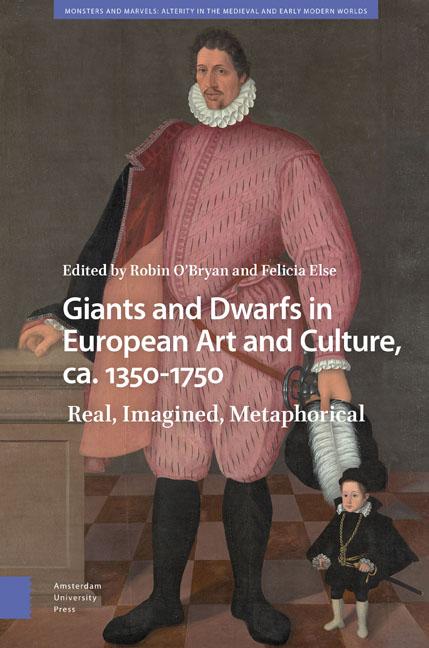11 - “Biancone”: Giants, Dwarfs, and the Rise of a Popular Nickname
Published online by Cambridge University Press: 13 April 2024
Summary
Abstract
Colossal statues like Michelangelo's David were often referred to as “il Gigante” (the Giant), a genre tied to heroic ancient traditions. One Florentine “Gigante,” Bartolomeo Ammannati's Neptune (1560–74) in the Piazza della Signoria, suffered criticism for its aesthetic shortcomings and acquired a popular nickname, “Biancone,” translated as “Big White One” (or “Giant Whitey”). This paper will trace its appearance in Lorenzo Lippi's Il Malmantile Racquistato (1676) where “Biancone” appears as an anti-hero, conquered and subjected to indignities. Lippi's work drew on earlier traditions that celebrated the vulgar, the grotesque, and the carnivalesque, pairing giants and dwarfs for comic effect. As statue and literary character, “Biancone” presents a colorful and humorous case study in the dynamics of Florentine public sculpture.
Keywords: Bartolomeo Ammannati, Neptune Fountain, Lorenzo Lippi, Malmantile Racquistato, mock heroic, colossal statues
A giant among giants, Bartolomeo Ammannati's Neptune stands as the centerpiece of a sumptuous fountain (1560–74) in the Piazza della Signoria of Florence (figures 11.1–11.3). Colossal statues such as this, like Michelangelo's celebrated David set up originally in this same piazza, were often referenced by just the term gigante. Ammannati's Olympian deity of the waters was carved from a single white marble block, the largest of its time and a revival of an ancient and highly esteemed genre of sculpture that showcased the technical skill of the artist and the monumental ambitions and power of a patron. However, its negative reception over the ages proves that bigger is not always better. While it was not the only statue in the piazza to be mocked by its public, it enjoys the dubious honor of having a catchy and popular nickname: “Biancone” (translated literally as “Big White One”, colloquially as “Big Whitey”). The very word employs the augmentative suffix -one with bianco, turning largeness and whiteness on their heads and using the term “Biancone” as a satirical critique. This study investigates the earliest known printed appearance of this nickname in Lorenzo Lippi's Il Malmantile Racquistato (The Castle Malmantile Regained, 1676), a mock-heroic epic that highlights words and phrases from the Florentine vernacular. Here and elsewhere, I explore the flip side of the heroic tradition associated with such colossi, one which casts giants in the domain of the grotesque, the evil, and the ridiculous.
- Type
- Chapter
- Information
- Giants and Dwarfs in European Art and Culture, c. 1350-1750Real, Imagined, Metaphorical, pp. 343 - 374Publisher: Amsterdam University PressPrint publication year: 2024

